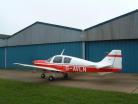Obtain installable Ubuntu CD-ROM
------------------------------------------------
Well, the system is ready for Linux installation. One little detail first - need to get the Linux software itself. I decided to go for the highly recommended Ubuntu, after the less than successful attempt with CentOS. No time to order a ready made CD or DVD, so need to download the ISO image (onto an XP box) and burn the CD disk. One reason for the choice is that this is the distribution that Dell use when pre-installing their machines with Linux.
1. Download Ubuntu 7.10 Gutsy Gibbon (ISO image).
There are numerous sites that will sell disks with the image on it. But if you have a decent bandwidth, it's cheaper to download your own. My bandwidth is useless, but it was still quicker than ordering disks and waiting for delivery.
I got the image from: http://www.ubuntu.com/getubuntu/download. It took nearly 3 hours for the 712MB image (ubuntu-7.10-desktop-i386.iso) to land on my Desktop.
2. Download ISO file burning software (unless you already have it)
Many commercial programs exist. I used a freeware program: ISO Recorder v2 from http://isorecorder.alexfeinman.com/isorecorder.htm. Once the ISO Recorder is installed, "Copy image to CD" option will appear when you right-click in the ISO file.
3. Having inserted empty CD in the drive, locate the ISO file you have downloaded, right-click it, and select the "Copy image to CD" option. Follow the steps - it will take few minutes for the new disk to be written.
Boot from the Ubuntu CD and install it on hard disk
--------------------------------------------------------------------
Select "Start or install Ubuntu". Watch the little orange bar for a couple of minutes, then a blank screen for a minute or so, eventually Ubuntu starts the services. This will initially start Ubuntu as Live CD (i.e. run directly off the CD). Linux is at that point in memory (and using the CD). However, we will use this to install Ubuntu permanently into the spare partition on the hard disk.
Double-click the Install icon, to start Install program.
Welcome screen - press "Forward" (notice default is English)
Where are you? - Use the map to locate a city in your timezone (
Time zone is shown as BST (GMT+1:00) - press "Forward"
Keyboard layout - press "Forward" (unless you are not in the
Prepare disk space - select "Manual" (see Note 1 below for the rationale of my partition layout that I am suggesting) - press "Forward"
Prepare partitions - on my machine, the current layout showed:
Device Type ... Size Used
/dev/sda
/dev/sda1 fat16 ... 49 MB 33 MB
/dev/sda2 ntfs ... 42952 MB 14700 MB
/dev/sda5 154890 MB unknown
/dev/sda6 fat32 ... 2154 MB 50 MB
Highlight /dev/sda5 and press "Delete partition" - it should now show as "free space"
Highlight the "free space" line and press "New partition".
Fill the form with: - 150 MB ext3 /boot
Highlight the "free space" line and press "New partition".
Fill the form with: - 2000 swap
Highlight the "free space" line and press "New partition".
Fill the form with: - 5000 MB ext3 /
Highlight the "free space" line and press "New partition".
Fill the form with: - 10000 MB ext3 /home
Highlight the "free space" line and press "New partition".
Fill the form with: -10000 MB ext3 /usr
Highlight the "free space" line and press "New partition".
Fill the form with: - 1000 MB ext3 /var
Highlight the "free space" line and press "New partition".
Fill the form with: - 850 MB ext3 /tmp
Highlight the "free space" line and press "New partition".
Fill the form with: - 2500 MB ext3 /spare1
Highlight the "free space" line and press "New partition".
Fill the form with: - 2500 MB ext3 /spare2
Migrate Docs and Settings - press "Forward"
Who are you? - fill in the form; press "Forward"
Ready to install
Note 1.
I never trust automatic partitioning tools - they never seem to split the disk in a sensible way.I want to share files with Windows, hence fat32 partition.
I'm of a traditional UNIX school, where a separate partition is used for just about anything ;-). I always have at least one spare partition, for rescuing data from broken partitions, experimenting, trying new or experimental filesystem types, etc.
This time I've ended up with 2 spare partitions, because one of them was going to be vfat type. This didn't work (see Note 2), but I will try changing the type later on, once the system is up and running.
Note 2.
Issues I had during the install:
When partitioning, after creating all partitions I wanted, I have then selected the rest of the disk and assigned the "don’t_use" filesystem type. What a mistake - the process crashed. Waited a long time hoping that the little timer indicating that something is happening would time out and allow me to continue. Nope. Had to cancel the whole procedure and start from scratch (all the way from double-clicking in the Install icon). Second time round tried fat16 instead of fat32. Same problem. Tried to "Ignore" it, but when the actual partitioning started, got a new message:
"Failed to create a file system: The fat 16 file system creation in partition #4 of SCSI1 (0,0,0) (sda) failed. Press "OK".
This put me back into the partitioner (but I had to select "Manual" again. However, at least the partition information was remembered. Just had to go through each one and allocate type and mount point. At this point, I have also given up on the fat partition, and set it to free space (by deleting it).
Once the complete partitioning process, you need to press "Finish". At this point, the Warning message popped:
"File system doesn't have expected sizes for Windows to like it. Cluster size is 2k (expected 1k); number of clusters is 24026 (47959 expected); size of FATs is 94 sectors (188 expected). I chose to ignore this message and pressed "Ignore".

No comments:
Post a Comment